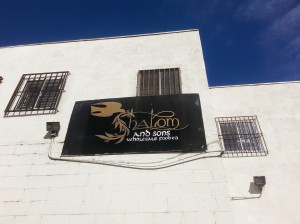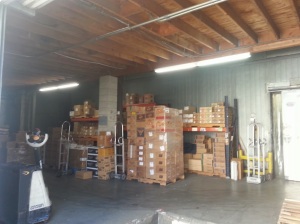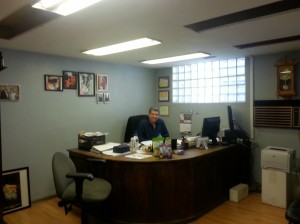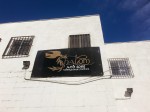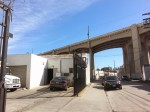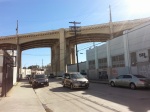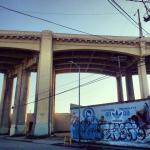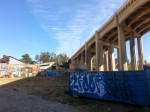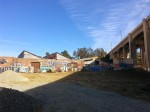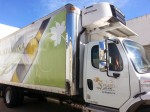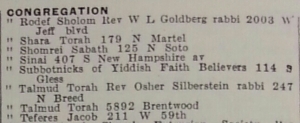To support healthy bodies, minds and hearts
The neighborhood of Pico Union one of the most important immigrant, working-class communities in the city of Los Angeles. In the shadow of downtown and overlapped with the adjacent garment district, most of the residents of this inner-city are Central American working-class families, as well as hard-working Korean and African-American families.

¡Vida Sana! Pico Union Project Community Wellness. Giving out free fresh produce from the farmers markets and providing resources for healthy living; every 2nd and 4th Thursday of the month from 2:30pm to 4:00pm @ Pico Union Project, 1153 Valencia St, Los Angeles, CA 90015.
And in this neighborhood of Pico Union, on the corner of 12th Street and Valencia there stands a grand old synagogue, the original location of Sinai Temple, founded in 1909; the oldest standing synagogue in the city. Today it is the Pico Union Project (PUP), founded by Jewish music sensation Craig Taubman, when he purchased the building a few years ago and restored it to use as an interfaith house of worship and multi-cultural community center. A community center where we bring together diverse partners from different cultures and faiths to serve the needs of the community in so many inspiring ways.
One of the events which really displays the spirit of Pico Union Projects the best is the bi-monthly ¡Vida Sana! Community Wellness events held on the 2nd and 4th Thursdays of each month from 2:30pm to 4:00pm at the site of the Pico Union Project (get directions). Where we give away free fresh produce and fruits from the farmers markets, have arts and crafts for the children, host nutrition classes for adults, and connect people with community resources for the whole family.
¡Vida Sana! comes out of an outgrowth of the seasonal community resource fairs that PUP has hosted since it’s inception just a few years ago. Excited by the outstanding success of these events and moved by the great needs of the community we are part of, Craig recognized that we needed to hold these events more often.
So back in 2016 I was sent out to ask the community what they felt they needed from our project.
Among the most important needs expressed was that our local families wanted access to nutritious food and resources for healthy living. In Latino communities like this the rate of diabetes is at about 18%, which is over twice as high as in white communities. Many families are effected by this devastating condition, which is often exacerbated by limited access to nutritious foods and health resources to be found in this corner of the inner-city.
For this reason Pico Union Project began to regularly focus our attentions on community wellness.
One of the major successes of this program is the vision and enthusiasm of Craig Taubman, as well as his unique ability to bring diverse partners together to get awesome tasks accomplished.
First, acquiring donations of unsold food from local farmers markets and partnering with friends of his to have it kept for us in refrigerated storage facilities they own until the days of our events. Thereby allowing us to give away quality fresh fruits and vegetables to our neighbors, all for free. Eliminating waste of this fine produce and feeding so many hungry families at the same time.
He also built a wonderful relationship with Seeds of Hope, a ministry of the Episcopal Diocese of Los Angeles which works with congregations, communities, and schools, to turn unused land into productive and beautiful gardens and orchards that provide fresh and nutritious foods to areas of need across the county. They have come out to help us plant trees, fruits and vegetables in the neighborhood with the enthusiastic help of the neighborhood children.
Seeds of Hope also provides nutrition and cooking classes, to discuss with parents how they can make healthier food choices, with fun presentations in English and Spanish which offer helpful tips to neighborhood parents on how to made tasty and nutritious dishes, often with the same fresh foods we are providing that day. They volunteers from Seeds of Hope are always thoughtful in providing recipes and culinary tips which are accessible and culturally appropriate to the people of our community, which are more likely to be incorporated into their lifestyle.
¡Vida Sana! even aims to provide fitness activities such as relaxing yoga and fun Latin dancing.
Though it must be noted that these events also provide all kinds of ways of developing wellness, not just of the body, but also of the mind and heart.
Our program has offered art, music, storytelling for the youth of our community. Engaging in arts and crafts with the children. We have even put together community murals with the permission of local businesses, enabling locals artists and youth to take pride and ownership of their community. And develop the creative skills and a sense of self-pride which can last a lifetime.
And that is just the beginning of what ¡Vida Sana! offers. It has hosted many resources to enrich the lives of our neighbors. Free resources that are useful for the whole family offered by:
- Good Samaritan Medical Center
- Red Cross
- Koreatown Youth + Community Center (KYCC)
- Archdiocesan Youth Employment Services
- Abraham Friedman Occupational Center
- Los Angeles Public Library
- City of Los Angeles Department of Transportation (LADOT)
- Los Angeles County Health Agency
- Los Angeles Trade Tech College
- Jewish Vocational Services
- PV Jobs (Playa Vista)
- Legal Aid Foundation of Los Angeles
- Los Angeles City Councilman Gil Cedillo’s Office (CD-1)
- Congressman Xavier Becerras’s Office (34th Congressional District)
- Consulate General of El Salvador
- Consulate General of Guatemala
- Consulate General of Mexico
- …and this is just to make a few of our community partners.
And our most important neighborhood partner is the Instituto de Educación Popular del Sur de California (IDEPSCA), which the most important Central American social service organization in the neighborhood; which is lifeline resource for the local residents, especially the day laborers, domestic workers and garment workers that live in this community. They have partnered with us since the very beginning, always stepping up to help us with even the most backbreaking of projects.
 However, the majority of the workforce for most ¡Vida Sana! events are volunteers from the public. People who come out with their temple, church or school to help us set-up and hand out fresh produce with us. And individual volunteers who engage in doing crafts and art project with our youth. And volunteers to help with planting fruit trees and flowers.
However, the majority of the workforce for most ¡Vida Sana! events are volunteers from the public. People who come out with their temple, church or school to help us set-up and hand out fresh produce with us. And individual volunteers who engage in doing crafts and art project with our youth. And volunteers to help with planting fruit trees and flowers.
Will you consider volunteering your time and resources to helping make a difference in the Los Angeles inner-city? Will you consider donating to this important cross-cultural, multi-faith project? Will you consider volunteering your energy and resourcefulness to make a positive impact in the lives of the people of downtown Los Angeles?
All this is possible because everyday people like you give heed the prophetic call and step-up to help us fulfill the mitzvah, “you shall love your neighbor as yourself.” (Leviticus 19:18)
CLICK HERE TO GET MORE INFORMATION AND TO SIGN-UP TO VOLUNTEER!
Do you like the Pico Union model? Do you have a community center, church or synagogue that you would like to host community resource events like ¡Vida Sana! ? The PUP model is inspiring people all over the city of Los Angeles to consider opening up their communal sites and religious space to utilizing this model project for the benefit of their communities. Let us know how we can help you get inspired and make this happen in your neighborhood!


